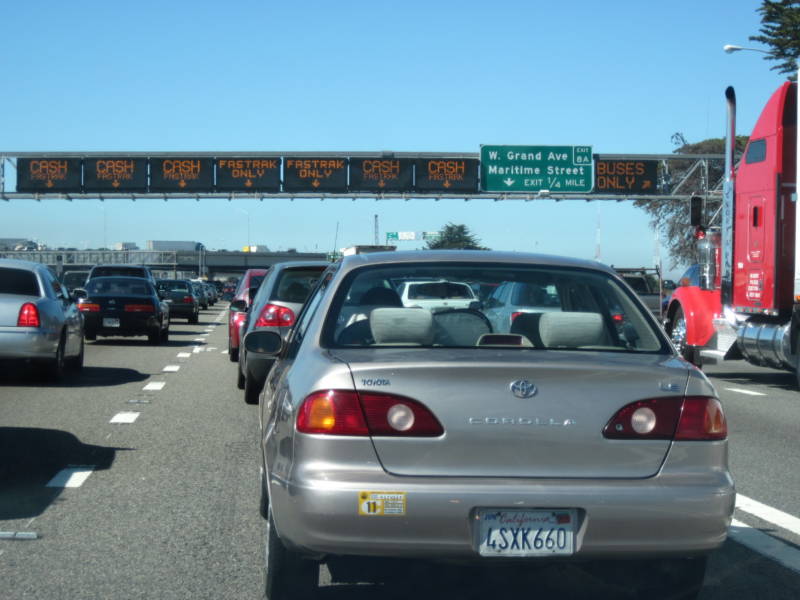
California’s regional planning authorities need to find new ways to get people to leave their cars at home.
Passenger vehicles are the single largest source of greenhouse gases in California, comprising one third of all the state’s emissions. Senate Bill 375, passed in 2008, is designed to chip away at those emissions by curbing sprawl and encouraging infrastructure that gets Californians to drive less — or at least, not as far.
This week the state Air Resources Board met a milestone (so to speak) in the implementation of the law by sending to California’s 18 regional planning organizations, greenhouse gas reduction targets for cars and light trucks . Now it will be up to the regions to create their own strategies for linking land use and transportation planning in ways that lure Californians out of their cars.
Mike McKeever is chair of the committee that advised CARB on the targets. He is also executive director of the Sacramento Area Council of Governments (SACOG), the metropolitan planning organization for the region. He says that SB 375 requires regions to get more “purposeful” about development.
McKeever said the central question that local planners are asking is: “Can you alter your future growth patterns, your urban settlement pattern in a way that reduces the length of auto trips and makes it easier for people to take some of their trips on transit or walking or bicycling or car pooling?”
Planners in Sacramento, San Diego and the Bay Area have some of the most aggressive targets: a seven percent reduction per capita by 2020 and 13-16% by 2035 (compared to 2005 levels). South Coast communities are shooting for an eight percent reduction by 2020, and 13% by 2035.
During the public comment period before the Air Board’s decision, many stepped forward to voice concerns that the targets were too aggressive, and would cause local and regional planners to give up before they even start. Others expressed fears that the targets would stifle new development and that they would trigger pricing strategies that would increase transportation costs for families.
Danny Curtin, who directs the California Conference of Carpenters says the targets could hobble employment in an already-suffering sector of the economy.
“It’s beginning to look like a ‘smart-growth’ strategy is becoming a no-growth strategy,” said Curtin. “And we’re deeply mired in an unemployment situation. So, at this time, that makes absolutely no sense.”
But advocates of the targets say that they are not designed to stop growth at all, but are designed to motivate regions to be more focused about the kinds of growth they encourage. Regions are charged with creating their own unique “Sustainable Communities Strategies” for meeting the targets in coordination with local governments which, regulators insist, retain control over land-use decisions.
Proponents of the targets cite the public health and environmental benefits to be gained from reducing driving in California, by building affordable communities that are more “walkable” and closer to good public transit, services, and job centers.
“If we’re serious about climate change, we have to figure out ways for more people to live and work in places where their overall environmental impact is smaller,” said Egon Terplan, regional planning director for the San Francisco Planning and Urban Research Association (SPUR).
“That means that what we spend money on as a region, can’t be on things that encourage driving. Every time we expand a freeway, we in fact are making it easier for someone to drive.”
The Sustainable Communities Strategy is a new element in the Regional Transportation Plan that each region already updates every four or five years. It requires the region to identify general locations recommended for growth and development, while also considering land use, transportation, and emissions reductions. San Diego’s updated plan is scheduled for July of next year, so it will be the first region to apply the new standards under SB 375. Sacramento follows in December of 2011.
